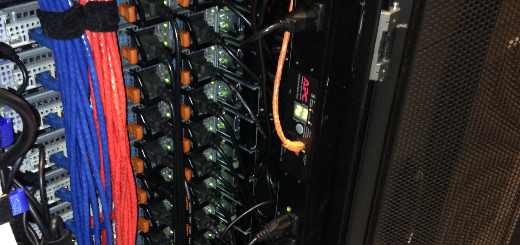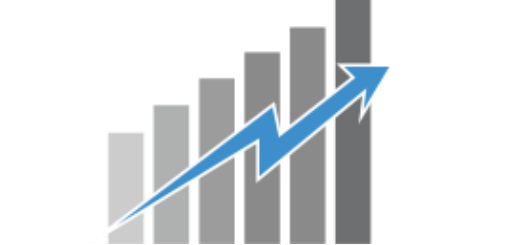WordPress Database Management
Do You Know What WordPress Database Management Is All About?
Any smart content management system (CMS) worth its words uses MySQL relational databases to manage website data. The most popular CMS platform on the web – WordPress – is no different. WordPress not only uses MySQL to fetch data, but also uses the existing databases to generate entirely new databases.
The added layer of encryption and multi-authentication systems make all MySQL based WordPress databases extra secure. In order to fulfil its specific requirements, every company uses different modifications and add-ons to customize MySQL databases for its WordPress site and CMS platform.
MySQL and WordPress
MySQL is a central component in the LAMP stack of open source web application software that is used to create websites. LAMP stands for Linux, Apache, MySQL and PHP. MySQL is also used in the LEMP stack, which replaces Apache for Nginx (pronounced Engine-X). WordPress uses PHP to store as well as extract data from within the MySQL databases by using SQL queries in the PHP mark-up framework, PHP being the server-side scripting language.
For example, if you have an account on WordPress-powered website with membership functionality, SQL is used to perform all membership authentication based tasks and is ultimately responsible for displaying accurate data on the front-end. PHP and SQL work hand-in-hand with WordPress, allowing you to create dynamic content. This allows the website administrator to assume control of user account based privileges on the website.
Without SQL and MySQL none of this would be possible. Even plug-ins and website themes are reliant on underlying databases to be able to function well and use SQL within the PHP mark-up to query the database and output content.
WordPress Tables
Each WordPress installation has 11 default tables in the database. These are used to enable the core components of WordPress and are at the root of the functionalities that this platform offers.
Being default provisions, these tables cannot by deleted or removed and currently, a WordPress installation comprises of the following:
1. wp_commentmeta: This table stores the metadata pertaining to the comments posted on a WordPress powered web page. It can also be used to add additional information about comments and is especially useful for the functioning of plug-ins.
2. wp_comments: This table actually contains the comments and primary information about the commenter, like URL, author name, e-mail, comments etc.
3. wp_links: It stores blog links created by the Link Manager plug-in or previous versions of WordPress.
4. wp_options: Not only are all WordPress options stored in this table, such as your reading and discussion settings, but even plug-ins use wp_options for storing saved settings as opposed to a custom table.
5. wp_postmeta: A table holding meta information about various posts and pages, it stores details of templates to display pages and custom fields etc. Some WordPress plug-ins may also access this table to store plug-in data like SEO requirements.
6. wp_posts: This table consists of all post types or content types including all pages, posts, revisions, and custom post types.
7. wp_terms: To render its taxonomy system efficient, WordPress uses items known as terms which are stored in wp_terms table.
8. wp_term_relationships: Posts on the website are linked to categorisation parameters such as tags from the wp_terms table. This linkage is filled up in the wp_term_relationships table.
9. wp_term_taxonomy: It is the table that is used to define terms and for the database to be able to allot spaces accordingly. For instance, how the database should differentiate between a category and a tag can be defined in this table.
10. wp_usermeta: Simply put, this table populates the user metadata. It does so by using the wp_users table.
11. wp_users: All your users are stored within this table. It contains primary information about user characteristics such as username, password etc.
It is important to note that the database schematic for a multi-site install is structured very differently to that of a standalone site. It is crucial to understand the differences to be able to manage either kind of installation effectively.
Putting it together: cPanel and phpMyAdmin
phpMyAdmin is a simple but powerful tool that renders having knowledge of the underlying database structuring fairly moot. However, knowing the underlying database framework can help get the most out of phpMyAdmin.
The remarkably straightforward user interface allows for visual management of MySQL databases. Since WordPress uses PHP, you will find many instances of the phpMyAdmin plug-in in the WordPress directory. phpMyAdmin is, without doubt, the market standard for managing database reliant websites. For instance, the industry standard control panel – cPanel – contains phpMyAdmin.
Concluding Remarks
Knowing about database systems is really not that crucial if you are running a fairly straightforward blog – like one about your cat. However, for any enterprise level websites, this becomes essential information. Tweaking with database frameworks could make a world of difference to the performance of the website – from decluttering to security. While cPanel and phpMyAdmin have made this significantly easier to do, their full array of functionalities are better used by an understanding of the more subtle technicalities.
- Reminder: Avoid Webmail and Password Reset Phishing Emails - June 25, 2024
- Our Newest Video! - December 31, 2021
- Updated Unblock IP Tool - October 6, 2020


